- Home
- Paul Christopher
The Sword of the Templars t-1 Page 15
The Sword of the Templars t-1 Read online
Page 15
“In principio creavit Deus caelum et terram terra autem erat inanis et vacua et tenebrae super faciem abyssi et spiritus Dei ferebatur super aquas dixitque Deus fiat lux et facta est lux.” He paused and then easily translated the familiar verses: “‘In the beginning God created the heaven and the earth. And the earth was without form, and void; and darkness was upon the face of the deep. And the Spirit of God moved upon the face of the waters. And God said, Let there be light and there was light.’” He paused again and looked up at the white-haired monk. “It’s the Vulgate Latin translation of the first lines of Genesis, taken directly from the Hebrew, not the Greek.”
“Well done,” said Brother Timothy. “As you know most religious documents from the Middle Ages began with a prayer or a quotation from scripture. Try using the gold wire and tell me what you find.” He reached forward and opened a narrow drawer in the front of the desk, taking out a pad of paper and a pencil. Holliday pulled his chair up to the table while Peggy watched over his shoulder. Within a few moments he was able to speak the first words of a message that had gone unheard for more than eight hundred years.
“ ‘To the reverend Father in Christ, and to all our friends in the kingdoms of France to whom this letter shall come: These are the words of the Bishop William de Rochefort, Vice-Master of the Temple. Listen and take heed.’ ”
“It works!” said Peggy. “Keep going, Doc!”
Dusk was beginning to fall by the time Holliday completed his translation and had written the full text of the secret message on the pad in front of him. It had clearly been intended to be read as verse:
In the black waters of the Pilgrim’s Fortress
A treasured silver scroll is found,
A thirst for knowledge girded round
These holy walls without a sound.
With dead Saladin’s echoing voice it calls
Us into battle once again.
“The Pilgrim’s Fortress was another name for Chвteau Pelerin,” said Brother Timothy.
“It’s all very poetic, but what exactly does it mean?” Peggy asked.
“I think it means we’re on our way to the Holy Land,” said Holliday. “We’re going to Israel.”
18
“An interesting tale,” said Raffi Wanounou, Professor of Medieval Archaeology at the Hebrew University of Jerusalem. The professor was a starkly handsome man in his late forties or early fifties with a long, squarechinned face common to many Moroccan-born Jews. His dark hair was speckled with gray and deep caliper lines extended down either side of his wide mouth. He was deeply tanned and had the slightly scorched look of someone who spends a great deal of time under the desert sun.
Peggy Blackstock and John “Doc” Holliday were sitting in Wanounou’s comfortable office at the university. They’d given the man on the other side of the desk a rough outline of their activities since leaving the United States, editing out a few dead bodies in the telling.
“Remind me again how you came to be knocking at my door in particular?” the professor asked.
“Your name came up in an e-mail from Steven Braintree at the University of Toronto to my uncle,” said Holliday.
“I know Steven quite well, of course. The Royal Ontario Museum is world-class. I only knew your uncle by reputation.”
“Professor Braintree mentioned that you knew a great deal about crusader castles,” said Peggy.
“A little.” He smiled. The smile was clearly for Peggy’s benefit alone.
Holliday bristled slightly at the Israeli professor’s obvious interest in Peggy. It was ridiculous; the man was almost old enough to be her father. “Castle Pelerin in particular,” he said, a little curtly.
“Pilgrim’s Fortress,” said Wanounou. “I wrote my thesis on it. Bigger than the Krak des Chevaliers in Syria. Never breached by siege or force of arms in two hundred years. Last bastion of the Knights Templar in the Holy Land.”
“We need to go there,” said Peggy.
“Not possible I’m afraid, Miss Blackstock.”
“Peggy,” she said, giving him a smile just like the one he’d given her.
“Peggy then,” beamed the professor.
“What’s the problem?” Holliday asked.
“You’d need special authorization. It’s a restricted military zone. Shayetet 13 uses it as a training area.”
“Shayetet 13?” Peggy asked.
“Israel’s version of Navy SEALs,” explained Holliday.
“It’s the other way around, actually,” said Wanounou. “Shayetet 13 existed long before the SEALs. They were established in 1949; the SEALs weren’t organized until the early sixties, as I recall.”
“You served with them?” Holliday asked.
“Lousy swimmer.” The Professor grinned. The grin was nothing like the smile he’d offered Peggy.
“Where did you do your three years?” Holliday asked.
“Three years?” Peggy said, looking baffled at the rapid-fire conversation.
“Compulsory military service,” said Holliday. Now he was getting annoyed with himself. The whole thing was turning into a pissing contest all because of a smile.
“It was more like eight,” said Wanounou. “Agaf HaModiin. Aman.”
“Army Intelligence,” said Holliday, impressed with the man, despite himself.
The professor gave Holliday a speculative look and tilted back in his chair.
“You know a lot about the military, Mr. Holliday,” he said.
“Doctor,” answered Holliday. “And Lieutenant Colonel; I teach Military History at West Point.”
“Then you outrank me, I guess,” said the professor, grinning again. “I only made major.” He laughed. “Maybe we should compare PhDs. See who got their doctorate first.”
“Sorry,” said Holliday. “I’ve been a little tense since Germany.” He paused. “If you were with Aman maybe you could pull some strings, get us into the castle.”
“I’d love an excuse to get out of the office for a while, but what pretext would I give? A couple of American tourists on a treasure hunt?” The good-looking man grimaced. “Really, Dr. Holliday. I think not.”
“It’s not a treasure hunt,” said Peggy.
“Knights Templar, a code in a crusader’s sword, Cistercian monks and Nazis running around? An obscure piece of poetry instead of a treasure map? Who are you going to get for the leading role, Nicolas Cage or Har rison Ford?” He shook his head. “Come on, guys.”
Holliday sighed.
“It’s a little far-fetched, I know, but-”
“I’d have to call in a lot of favors to get us in there,” said Wanounou. “I’m not sure I want to do that.”
Us? Holliday thought. He smiled to himself. He recognized the tone in the other man’s voice; the sound of curiosity getting the jump on the cat’s better instincts. The sizzle you got when you leaped from the frying pan into the fire.
“Please?” Peggy pleaded, shooting Wanounou a smile that would have lit up a dark room for at least a week. It was the straw that broke the camel’s back.
“All right,” he said finally. “I’ll see what I can do.”
Two days later, under a hot summer sky, they drove out of the ancient city on the Jerusalem-Tel Aviv Highway. Highway 1, as it was officially known, was a modern thruway that arrowed northwest in a bewildering series of unsigned on- and off-ramps but that cut the driving time between the two cities to only an hour.
Wanounou drove his ancient, rust-pocked Toyota Land Cruiser like a fighter pilot, doing Immelmanns and barrel rolls through the dense traffic, all the while keeping up a running travelogue, most of it directed at Peggy, who was sitting in the cramped rear seat. Holliday had put himself in the front beside Wanounou in an attempt to cool the growing heat between Peggy and the professor, but now he was regretting his decision. After a few close calls on the highway Holliday found himself thinking about Brother Timothy’s question about his belief in a higher power; whether he believed in it or not, he was praying to it. Co
nsidering his present circumstances it was a toss-up between Christ, Jehovah, and Allah to give him the best bang for his devotional buck.
Skirting Tel Aviv, the Israeli professor swept the battered old 4Ч4 onto the Ayalon Highway running between Tel Aviv and Haifa in the north. It was another four-lane nightmare of rushing traffic that raced up and down along the route of the ancient coastal pilgrim road that wound its way to Acre.
With the rugged slopes of Mount Carmel rising on their right and green cotton fields to their left on the plain of what had once been the land of Phoenicia, Wanounou maneuvered the clattering old vehicle on for another three quarters of an hour.
Eventually they reached Atlit Junction, another clo verleaf, and turned toward the sea. A few miles to the north the outskirts of Haifa were visible through the heat haze, climbing the slopes of Mount Carmel and spreading around the scimitar arc of Haifa Bay.
In an instant the twenty-first-century reality of congested traffic disappeared, and Holliday felt time fall away. Knights mounted on thundering coursers and even larger destriers rode along the ancient road, armor flashing in the sun. Pilgrims walked beside plodding packhorses while lords and ladies lounged in brightly painted covered wagons. Dust hung like mist in the hot, still air.
They rattled across a set of railway tracks then turned off onto a narrow, two-lane dirt road with a long, curving beach on one side and a swampy pool with a trio of pale flamingos feeding on the other.
Beyond the swampy area there was an industrial salt pool with a long elevated pipeline feeding it from beyond the sweeping bay on their left. Then the stark, bleak ruins of Castle Pelerin rose in front of them like a dark dream from the past. It made the old castle ruins on Kellerman’s estate outside Friedrichshafen look puny by comparison.
Wanounou parked by the side of the road, and they climbed out into the hot, bright sun. The professor was wearing faded old fatigue pants and a T-shirt that said: ARCHAEOLOGISTS DO IT IN THE DIRT. Holliday and Peggy were both in jeans and DON’T WORRY, BE JEWISH T-shirts they’d picked up in the Muslim Quarter of Jerusalem the day before. All of them were wearing Hebrew University baseball caps against the harsh summer sun. In front of them was a rocky promontory three quarters of a mile long, forming the northern arm of a small harbor to the south. The remains of the inner keep stood like a massive square beacon against the brilliant blue background of the Mediterranean beyond.
“Holy crap,” said Peggy.
“An apt enough description,” laughed the professor. “They dug a forty-foot-wide fosse, or moat, the entire width of the peninsula that they could flood with seawater on command. On the other side of the moat there was a colossal limestone wall sixteen feet thick, rising almost a hundred feet into the air. The whole thing was built by hand, mostly by volunteer labor from pilgrims on their way to Jerusalem, and it only took them six months.
“On the dead ground in front of the wall they built three massive towers, one at each end and one in the middle. The only way you could get beyond the towers and the wall was through a narrow entrance, angled so it was impossible to ram the gates. There were stone halls, chapels, crypts, storerooms, and everything necessary for a force of four thousand men and the workers to provide for them.
“The place was invulnerable; they had their own harbor, and in the event of a siege they could be re-supplied from the sea. There was an artesian spring, a pool, and three deep wells to catch the runoff through the limestone from Mount Carmel, so water wasn’t a problem either.”
“Wasn’t there a fortification here before the twelve hundreds?” Holliday asked. He vaguely remembered something about an earlier fortress. They walked toward the old moat, following a narrowing, winding path through the rough grass and sand.
“There was a small outpost called Le Destriot by the coast road, but it was long out of date even before they built Pelerin,” answered the professor. “The Romans had a harbor here two thousand years ago, and the Phoenicians were here two thousand years before that. When the Templars were digging the foundations for Pelerin they found a treasure of Phoenician gold coins that was almost enough to finance the construction of the whole castle.”
“So we’re not the first people to look for treasure here?” Peggy asked, her eyes twinkling.
Wanounou twinkled back, then turned and pointed to the craggy slopes of Mount Carmel two miles or so west across the narrow coastal plain.
“We’ve been excavating up there in the caves at Wadi el Mugharah since 1951,” said the professor, “the Brits and you Yanks even before that. Where we’re standing now is the biblical Plain of Sharon. We’ve found material dating back to the Neanderthals and even before, to the early Stone Age.
“There’s been human occupation of one kind or another in this area for two million years. There’s even good evidence to show that this was once the biblical Garden of Eden, at least as far as the old prophets were concerned.” He turned around, arms spread out. “The sea, the plains, the mountains. Everything old Adam and Eve could have asked for.” Wanounou smiled. Peggy smiled back.
Holliday frowned, then sighed, wondering if it was time to have a chat with her about the potential dangers of the situation. Wiser to keep his mouth shut for the moment, he thought.
They reached a high, rusty razor wire fence that stretched across the neck of the narrow peninsula. There were faded red notices in Hebrew, Arabic, and English every ten or fifteen feet along the wire:
MORTAL DANGER-MILITARY ZONE
ANY PERSON WHO PASSES OR DAMAGES
THIS FENCE ENDANGERS HIS LIFE
No exclamation marks, just a simple and explicit statement of fact.
“Heartwarming,” said Peggy. On the other side of the fence they could see a slight dip in the ground that marked the position of the old moat. A few yards farther in the earth thin sandy soil rose steeply, thick with coarse weeds and shrubs, all that was left of the original imposing curtain wall.
They walked on down the path for a short distance, stopping in front of a gateway set into the fence. It was secured with a heavy padlock. There was another sign on the gate. This one was even clearer:
MINEFIELD
“Are you sure we have permission for this?” Holliday asked.
“Better than that,” said Wanounou, digging into one of the pockets of his baggy fatigue pants. “I’ve got a key.”
“Uh, what about the mines?” cautioned Peggy.
“There aren’t any,” said the professor, smiling broadly. “The signs are to impress the tourists and scare off any kids.”
“Said the one-legged blind guy with no fingers,” muttered Peggy.
“Your connections must be better than I thought,” said Holliday. They went through the gate, and Wanounou locked it behind them and pocketed the key again. They headed up a sandy footpath that crossed the old moat and wound its way up the hillocky remains of the old wall.
“Turns out that the navy hasn’t used this place in ages,” the professor said as they trudged up the path. “They used to train in Haifa Bay, but it got too polluted, so they moved down here. But then they cleaned up the bay, so they moved back. They might have left some equipment behind, but the property is empty. They left the fence and signs in place until they figure out who to hand it over to-the archaeologists or the tourists.”
A flight of dowdy-looking, pale brown Marbled Ducks flew overhead in ragged V formation, heading for the marshland where they’d spotted the flamingos. The air tasted of salt and the sea, and there was a light onshore breeze taking the edge off the midday heat. A hundred and fifty miles away Cyprus crouched invisibly on the blue horizon. They reached the top of the path and looked down on the ruins spread out before them.
Enough of the gigantic castle remained to make visualizing it relatively easy. From the low foundations to the seaward end of the castle was more than two football fields in length. From side to side the structure had been about half that size. There had been north and south towers on the inner wall, a higher upper w
ard flanked by sunken undercrofts flanking it and the massive castle keep in the center.
There had been walls on all three sides, including the side facing the sea with a seawall and a long breakwater that still remained, jutting out into the shallow, natural harbor. Lateen caravels and square-rigged cogs would have unloaded there, safely protected and out of range of any attackers from the landward side.
Ringing the keep, there had been five great halls, each one at least a hundred feet long. Now, only lines of half-buried stone and ghostly dips and patterns in the soil remained. Tufted patches of sea grass grew here and there, slabs of paving stone appearing between them, marking old walkways like long scars in the dirt.
“Needle in a haystack,” said Peggy, looking across the enormous interior of the castle’s inner wards. “That’s an awful lot of ground to cover.”
Raffi Wanounou reached into his pocket again, this time taking out a folded map. It was a diagram of the castle excavations, done years ago when he’d spent three summers here when he was a graduate student. He turned it in his hands, orienting himself.
“What does your little ditty say?” he asked.
Holliday had memorized it:
“In the black waters of the Pilgrim’s Fortress
A treasured silver scroll is found,
A thirst for knowledge girded round
These holy walls without a sound.
With dead Saladin’s echoing voice it calls
Us into battle once again.”
“The ‘black waters’ might well refer to the castle’s water supply,” said the professor, looking down at the diagram and up at the huge expanse of broken ground in front of them.
“You said there was a spring and some kind of pool,” said Peggy. “Maybe that was it.”

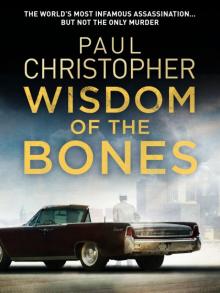 Wisdom of the Bones
Wisdom of the Bones The House of Special Purpose
The House of Special Purpose The Second Assassin
The Second Assassin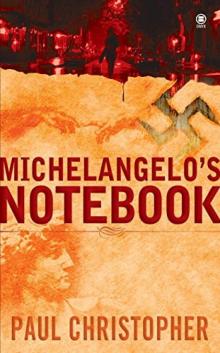 Michelangelo's Notebook
Michelangelo's Notebook Templar Legion
Templar Legion The Sword of the Templars t-1
The Sword of the Templars t-1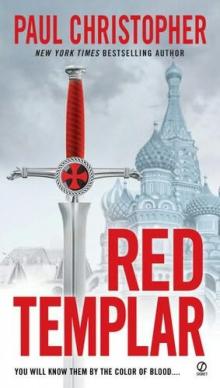 Red Templar
Red Templar The Aztec Heresy
The Aztec Heresy The Templar Legion
The Templar Legion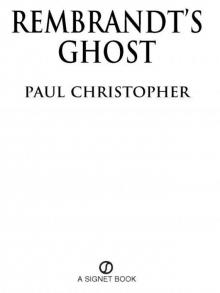 Rembrandt's Ghost
Rembrandt's Ghost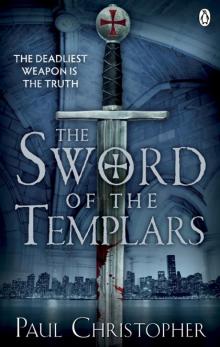 Sword of the Templars
Sword of the Templars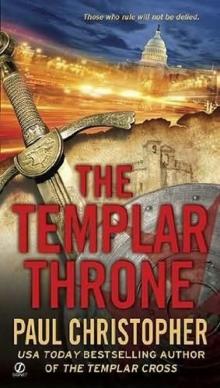 The Templar throne t-3
The Templar throne t-3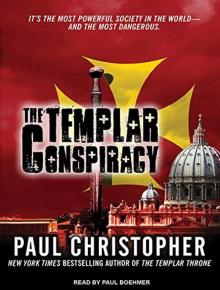 The Templar Conspiracy
The Templar Conspiracy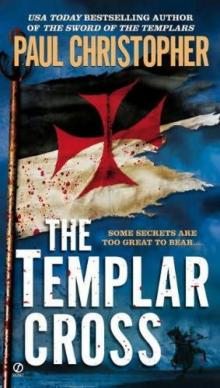 The Templar Cross t-2
The Templar Cross t-2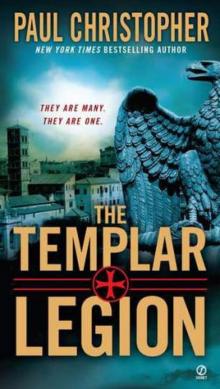 The Templar Legion t-5
The Templar Legion t-5 The Lucifer Gospel
The Lucifer Gospel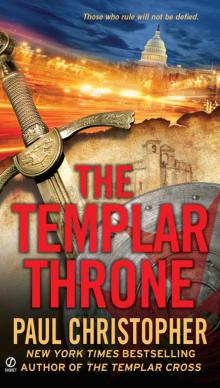 Templar Throne
Templar Throne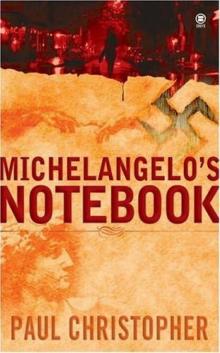 Michelangelo_s Notebook fr-1
Michelangelo_s Notebook fr-1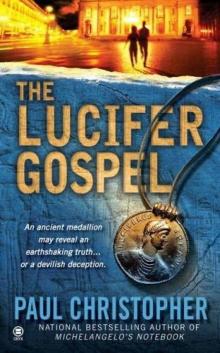 The Lucifer Gospel fr-2
The Lucifer Gospel fr-2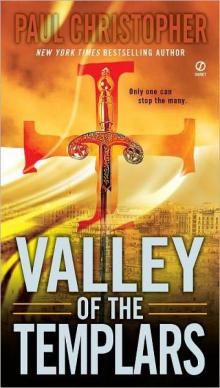 Valley of the Templars ts-7
Valley of the Templars ts-7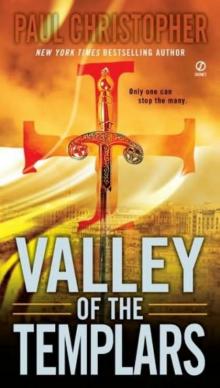 Valley of the Templars
Valley of the Templars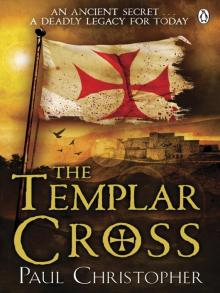 Templar Cross
Templar Cross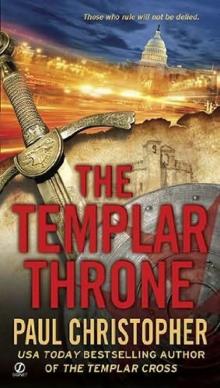 The Templar Throne
The Templar Throne The Templar Cross
The Templar Cross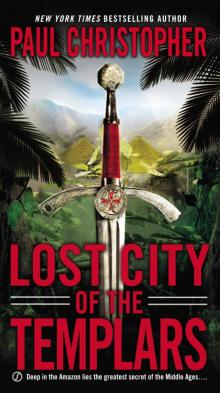 Lost City of the Templars
Lost City of the Templars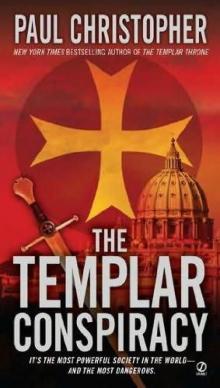 The Templar conspiracy t-4
The Templar conspiracy t-4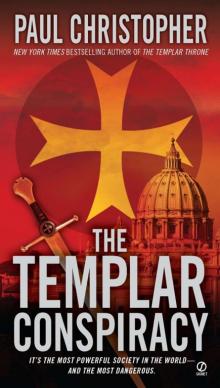 Templar Conspiracy
Templar Conspiracy